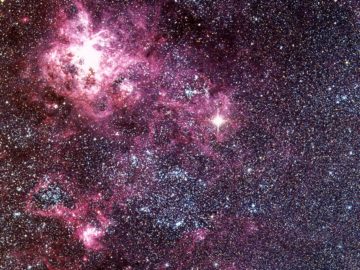Davide Castelvecchi in Nature:
 Masayuki Nakahata has been waiting 35 years for a nearby star to explode.
Masayuki Nakahata has been waiting 35 years for a nearby star to explode.
He was just starting out in science the last time it happened, in February 1987, when a dot of light suddenly appeared in the southern sky. This is the closest supernova seen during modern times; and the event, known as SN 1987A, gained worldwide media attention and led to dramatic advances in astrophysics.
Nakahata was a graduate student at the time, working on what was then one of the world’s foremost neutrino catchers, the Kamiokande-II detector at the Kamioka Underground Observatory near Hida, Japan. He and a fellow student, Keiko Hirata, spotted evidence of neutrinos pouring out of the supernova — the first time anyone had seen these fundamental particles originating from anywhere outside the Solar System.
Now, Nakahata, a physicist at the University of Tokyo, is ready for when a supernova goes off.
More here.
